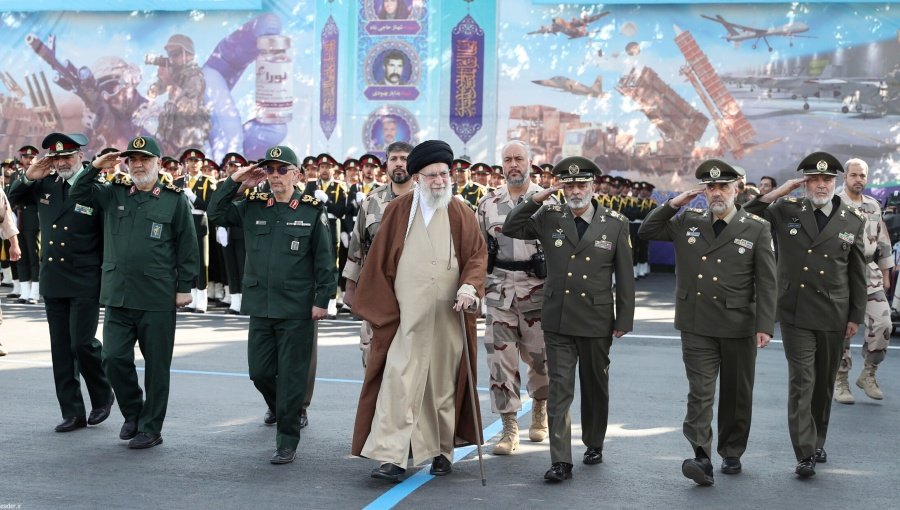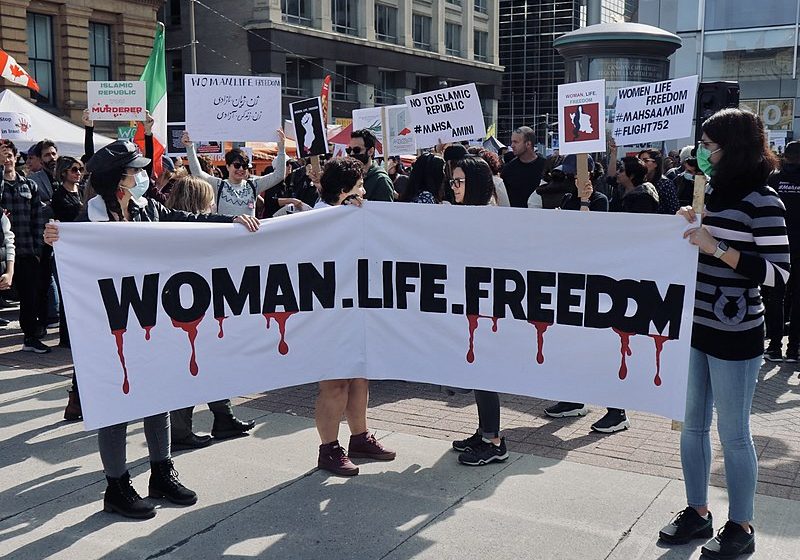Australia/Israel Review
Iran’s attack was a show of weakness
Apr 19, 2024 | Kenneth F. McKenzie Jr.

On April 14, Iran launched a ballistic missile, drone and cruise missile attack on Israel from its own soil. The attack was without subterfuge and of a scale well beyond any that preceded it. The strike was indiscriminate in targeting and designed to cause casualties. Belated Iranian protests notwithstanding, this was a “maximum effort”. The Israeli response, aided by the US, the UK, France and nations in the region, was largely successful. Iran has demonstrated that it is willing to do anything to further its campaign against Israel’s existence.
There’s some history here. On Sept. 14, 2019, drones launched from bases in western Iran struck oil refineries operated by Saudi Aramco at Abqaiq and Khurais, Saudi Arabia. The damage to global oil production was significant. The Iranians denied culpability, and the profiles their drones used made it easy to avoid the reality of a state-on-state attack. On Jan. 8, 2020, Iranian ballistic missiles, also launched from bases in western Iran, struck Al Asad air base in Iraq. This was a response to the Jan. 3 US strike that killed Gen. Qassem Soleimani in Baghdad. No US troops at the base were killed, and heavy casualties were averted only because commanders on the ground anticipated the attack and repositioned forces accordingly. Iran claimed responsibility for this assault. Both these attacks seemed to represent a major escalation, a crossing of the Rubicon into the territory of attributable state-on-state attacks.
Why has Iran now undertaken what can only be characterised as a desperate attack – one that exposed the weaknesses of its much-touted missiles and drones? The reason is clear. For the past several months, Israel and Iran have engaged in a low-level “dialogue of targets”. Israeli strikes have taken out Iranian targets in Syria, Lebanon and occasionally Iran itself. Iran’s response has been ham-fisted. In the shadow war, Israel has outfought Iran.
The April 1 Israeli strike against Iranian planners in Damascus was the culmination of Teheran’s embarrassment. Taking a page from Russian strategic doctrine, the Iranians tried to escalate to de-escalate, taking a very aggressive action to raise the stakes dramatically. The intention is to cow the opponent into changing its behaviour by convincing it that it is at heightened risk. The key to this kind of tactic is actual leverage – a genuine capability that puts the opponent at grave risk.
That hasn’t happened, because it’s apparent that the Iranians are playing a weak hand. For years the ballistic missile, drone and cruise missile force has been at the heart of Iran’s strategic deterrence – more important in practical terms than its nuclear program. The attack on April 14 was poorly executed and a strategic miscalculation. The vulnerability of Iran’s force has been exposed, and the regime is gravely weakened as a result. Israel has been strengthened by a stunning display of military competence, a striking contrast with that seen on October 7.
Another factor is that Lebanese Hezbollah’s involvement was minimal, limited to tactical rocketing into the Golan Heights. This is of enormous strategic significance. The scenario Israeli planners feared most was the “dual axis” missile and drone attack, in which thousands of missiles from Lebanon joined the attackers from Iran. Lebanese Hezbollah is as dedicated as Iran to the destruction of Israel, but it realises Israel’s ability to wound it badly if it enters the fray. So far Hezbollah has chosen to sit on the sidelines. That made the Iranian attack a manageable problem for Israeli defenders.
For the US, the successful defence of Israel validates years of work to create an integrated air and missile defence, an effort that brought together many nations that all recognise the threat of Iran. It also vindicates the decision to move Israel from European Command into Central Command, which covers the rest of the region. The seamless coordination and mutual support this enabled was evident under demanding circumstances.
Iran’s overriding strategic priority is protecting the theocratic regime. Fundamental to this was a conventional missile and drone force that could overpower its neighbours. This failure shakes the regime’s stability. In conducting this latest attack, it has shed the last check on its ambitions. Iran will attack any regional nation anywhere, without pretence or deniability. The downside for Iran’s targets is that once a nation has conducted an attack of this nature, it is politically easier to do it again.
What’s next? The initiative has shifted to the Israelis. The gap between Israeli competence and Iranian aspirations is clear, even to the Iranians, despite their attempts to put a brave face on their failure. Israel’s neighbours will certainly see the effectiveness of its defence. Israel could unleash a violent and decisive counterstrike against Iran.
Some are calling for Israel to destroy the Iranian nuclear enterprise. Now isn’t the time for that. What’s needed is a carefully calibrated response on a scale that reinforces Israeli technical mastery. That would reset deterrence. Informed observers, whatever their sympathies, all know who won this engagement. The hard part, as always, is translating battlefield success into lasting policy advantage and an opportunity for peace. That’s the task for Israel.
Gen. McKenzie, a retired US Marine general, served as commander of US Central Command, 2019-22. He is Executive Director of the Global and National Security Institute at the University of South Florida and author of The Melting Point: High Command and War in the 21st Century, forthcoming in June. © Wall Street Journal (wsj.com), reprinted by permission, all rights reserved.
Tags: Iran, Israel, Middle East






